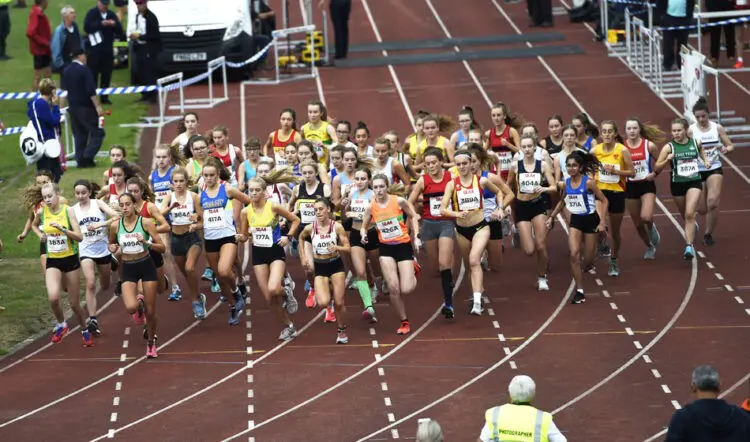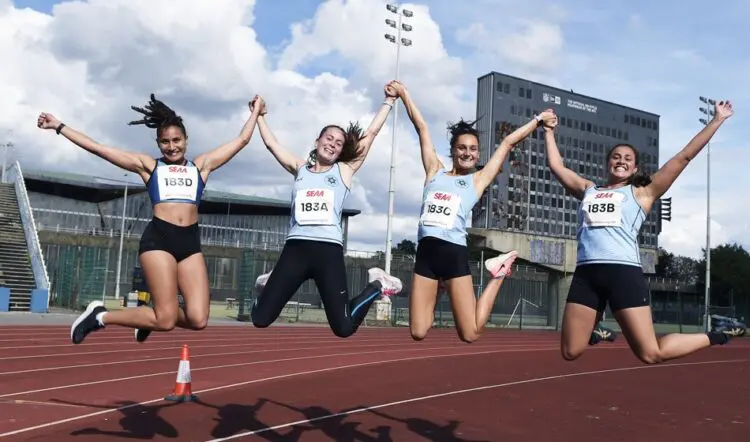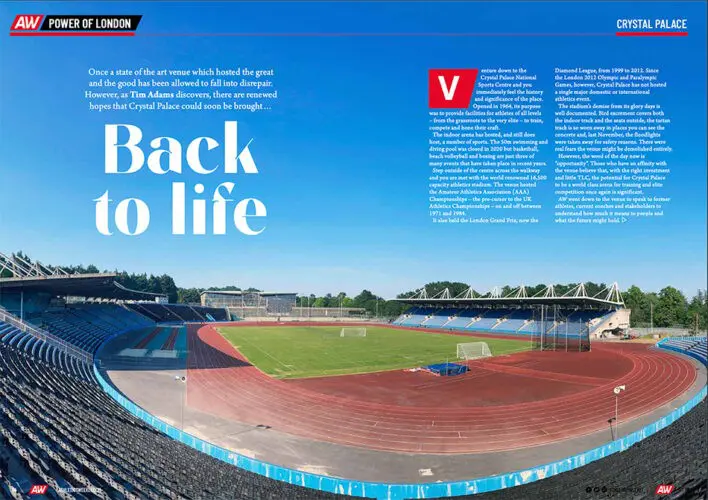Venture down to the Crystal Palace National Sports Centre and you immediately feel the history and significance of the place. Opened in 1964, its purpose was to provide facilities for athletes of all levels – from the grassroots to the very elite – to train, compete and hone their craft.
The indoor arena has hosted, and still does host, a number of sports. The 50m swimming and diving pool was closed in 2020 but basketball, beach volleyball and boxing are just three of many events that have taken place in recent years.
Step outside of the centre across the walkway and you are met with the world renowned 16,500 capacity athletics stadium. The venue hosted the Amateur Athletics Association (AAA) Championships – the precursor to the UK Athletics Championships – on and off between 1971 and 1987.
It also held the London Grand Prix, now the Diamond League, from 1999 to 2012. Since the London 2012 Olympic and Paralympic Games, however, Crystal Palace has not hosted a single major televised domestic or international athletics event.
The stadium’s demise from its glory days is well documented. Bird excrement covers both the indoor track and the seats outside, the synthetic track is so worn away in places you can see the concrete and, last November, the floodlights were taken away for safety reasons. There were real fears the venue might be demolished entirely.
However, the word of the day now is “opportunity”. Those who have an affinity with the venue believe that, with the right investment and a little TLC, the potential for Crystal Palace to be a world-class arena for training and elite competition once again is significant.
AW went down to the venue to speak to former athletes, current coaches and stakeholders to understand how much it means to people and what the future might hold.

The battle to save Crystal Palace – and another promise
In October 2014, those concerned with the lack of legacy from the London 2012 Games met in the cafeteria at the Crystal Palace indoor centre. There was one topic of conversation. How best to secure a long-term, sustainable future for the complex?
The result was the establishment of the Crystal Palace Sports Partnership (CPSP), a body that John Powell has headed up over the last nine years. One of the most recognisable figures at the venue and a coach since 1976, Powell’s memories of athletics go back decades.
“The Friday and Saturday Grand Prix nights were a grand tradition both in athletics and the local community,” he tells AW. “Usain Bolt – and you could name pretty much every athlete, from 2011 to when it first started hosting events, too – has trained or competed here.
“Historically, this place has had the highest demand for athletics in the country. It’s about having athletes from all ages and all abilities, as has always been the case, to come here and fulfil their potential.”
Powell wishes to see international athletics return to Crystal Palace but also stresses the importance of making it an accessible venue for clubs. In his time as Chairman of CPSP, consultations to redevelop the track and stadium have fallen flat and even though London Mayor Sadiq Kahn has pledged millions of pounds to redevelop the stadium, Powell still needs to see it to believe it.
The “once in a generation redevelopment” was announced by the Greater London Authority (GLA), who have jurisdiction over the complex, back in May and immediate planned improvements in the next 12 months include the repairing of the athletics track and replacement floodlighting.
Any structural work on the stadium is part of a long-term investment strategy, including the indoor centre, that could take four to five years.
“Sadiq Khan has promised millions to upgrade the place inside and out,” Powell says. “If that’s going to happen then that’s absolutely brilliant and it’s far better than anything we’ve heard to date. Until the builders come in and the place looks a bit more useable, I’m afraid the jury’s out on any promise, though. As I say, where there are promises there is hope and in a year’s time we may be standing on a track that has vast improvements.”

The coaching perspective
Donovan Reid knows Crystal Palace well. He first competed as a junior there in 1975 and then raced at the venue as a senior between 1981-1992. During that time, he represented Great Britain at the 1984 Olympics and England at the 1982 Commonwealth Games. The 59-year-old, who has coached at Crystal Palace since he retired from competition, remembers how the atmosphere used to inspire him.
“I lived in Brixton so it was the nearest place that I could get to when growing up,” Reid tells AW. “The memories here aren’t just about those that competed but the people that came here to watch and spent their hard-earned cash through the gates. This was sport and athletics at its rawest level.
“As an athlete you blocked the noise out but as a coach you could hear the atmosphere and that’s what makes this place. When it was full it was like a huge party. Everybody was here to watch the best and that’s what they came to see.
“Now, if you went up to someone on the street and mentioned Crystal Palace to them, they’d have a really bad image of this place.”
Reid coaches a sprints group at Crystal Palace and last winter they couldn’t train in the evenings because the floodlights were removed. It’s one of a number of challenges he has had to overcome but he remains confident that the opportunities for renewal are significant.
“We’ve got new superstars in British Athletics and we need to promote them here,” he adds.
“After London 2012, the legacy was to promote sport in this country but I’m sad it hasn’t been pushed far enough. We have kids come to Crystal Palace and on a Saturday morning there are probably 60 to 70 of them on the track. That’s because their parents and grandparents have fond memories of this place.
“The perfect world for Crystal Palace would be that it’s a training and competition track. End of. If, on a training night, people have to queue up to get in, that’s the definition of legacy.”

Is Crystal Palace the perfect area?
Jade Johnson was 12 when she first came to Crystal Palace and stood on the runway at the South of England Championships. It’s a memory that has stayed with her forever.
The 2002 European and Commonwealth long jump silver medallist also represented Great Britain at the 2004 and 2008 Olympics. She puts a lot of that down to Crystal Palace.
“I remember it being vibrant and exciting,” she tells AW. “That was when people looked at me and stated for the first time that ‘this girl has talent’. Some of these children have never even seen any world class athletics on this track. I watched events here and then ended up winning my one and only Diamond League, at Crystal Palace, in front of my family and friends.
“It was a massive stadium that was full to the brim and there was nothing like that feeling. This track deserves that status again and for world class athletes to compete on it with fans cheering them on in the background. That then inspires the next generation.”

Crystal Palace, which is on the boundary of the four London boroughs of Bromley, Croydon, Lambeth and Southwark, is one of the most densely populated areas of the capital.
Johnson states that the ability to attract so many people from across London is one of its biggest unique selling points, especially with Overground trains connecting Crystal Palace to London Bridge, Victoria and Whitechapel.
“One of the reasons why athletes came to London – I had lots of friends who used to say that Crystal Palace was one of the best competitions on the calendar – was that everyone could feel connected,” she says. “They can find someone to relate to in their culture.
“Opportunity at a basic level is allowing children to come to Crystal Palace, experience the venue, grow, develop and get use of the facilities. We clearly need Crystal Palace to get back to its best.”

What about club athletics?
One of the many clubs that uses Crystal Palace is South London Harriers. It’s their training base for sprints, middle-distance, jumps and throws. Crystal Palace Fun Runners, Crystal Palace Triathletes and Crystal Palace parkrun are all regulars, too, and the fact there is no anchor club is one of the venue’s other unique selling points.
Kay Thoburn, a coach with South London Harriers, leads sessions at Crystal Palace and she tells AW: “To have a facility like Crystal Palace where you have everything in one place is crucial. Children can have a go at everything and at that age, it’s vital. My own daughter started off as an endurance athlete and she’s now a high jumper.
READ MORE: Interview with the man in charge of redeveloping Crystal Palace
“With these facilities, and a club set-up, you can look at athletes and get them to try other events based on certain traits. I train alongside Donovan Reid and we share tips.
“We can train here now while it’s light but when it’s dark we haven’t got floodlights. When you are dealing with youngsters, you have to put safety first. Let’s crack on and make these small changes already to help bring it back to its former glory.”
» This feature first appeared in the July issue of AW magazine, which you can read here
